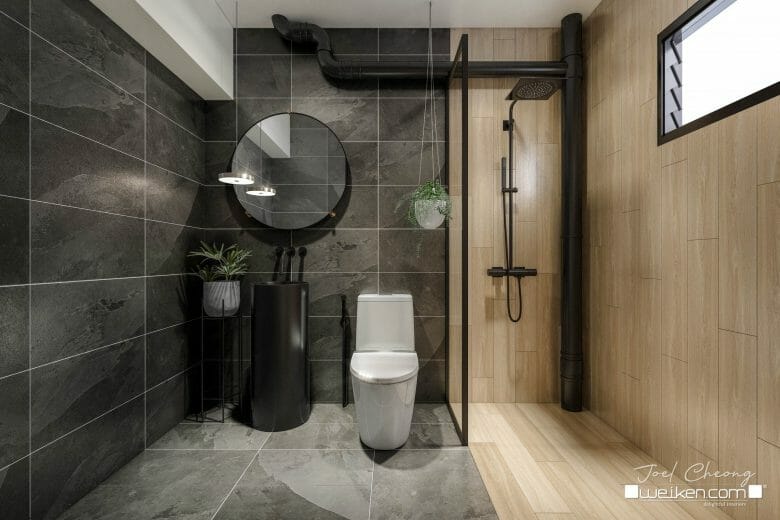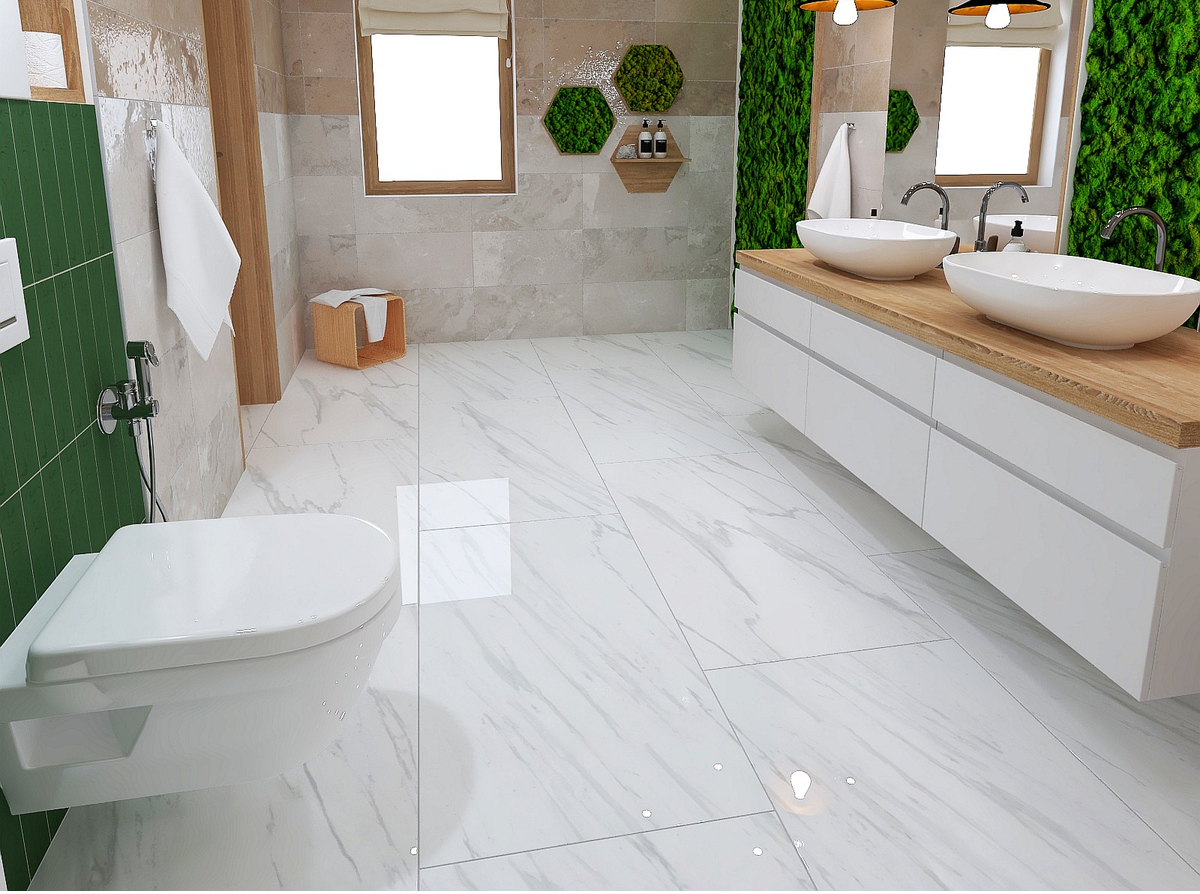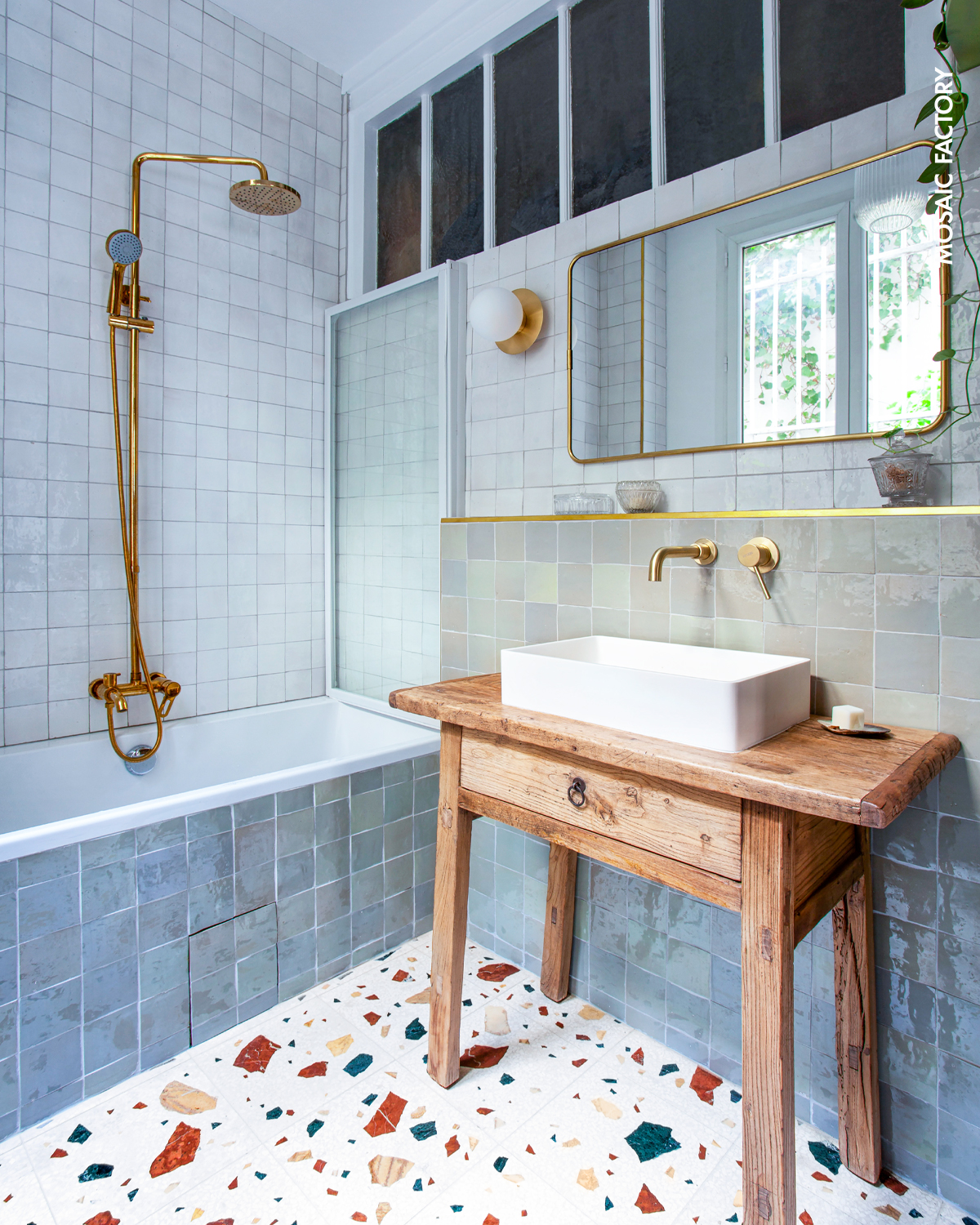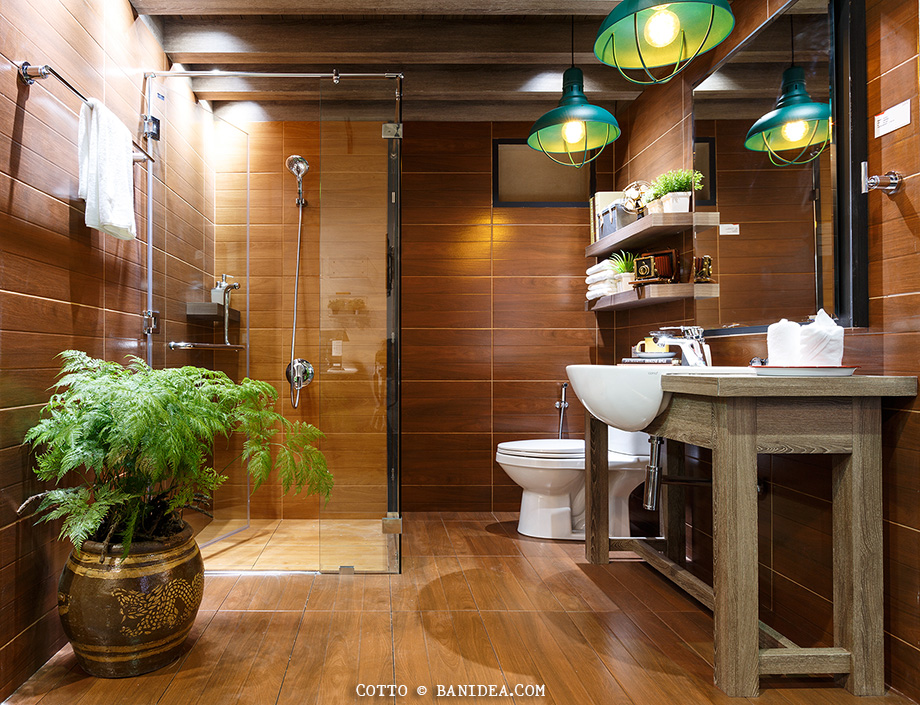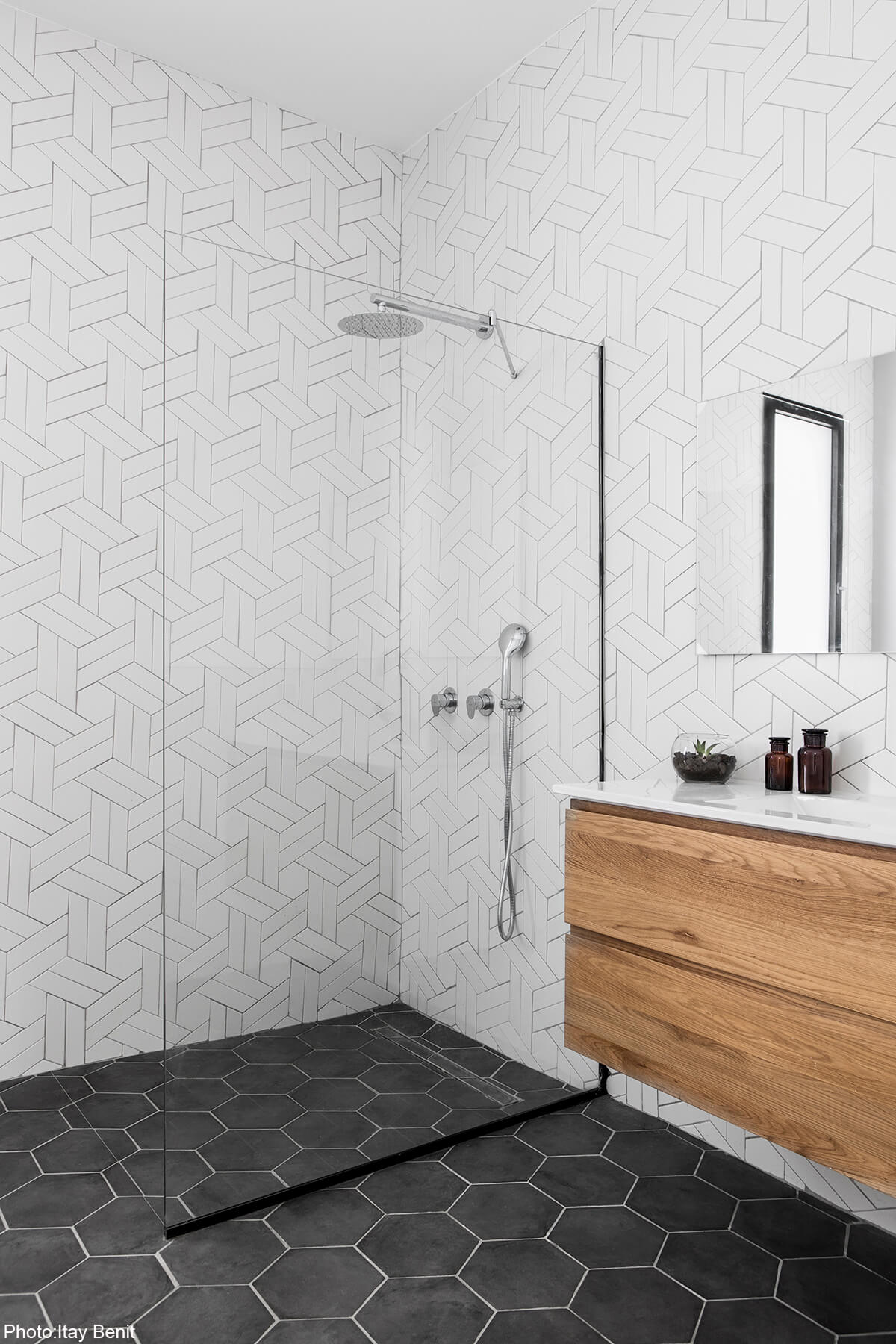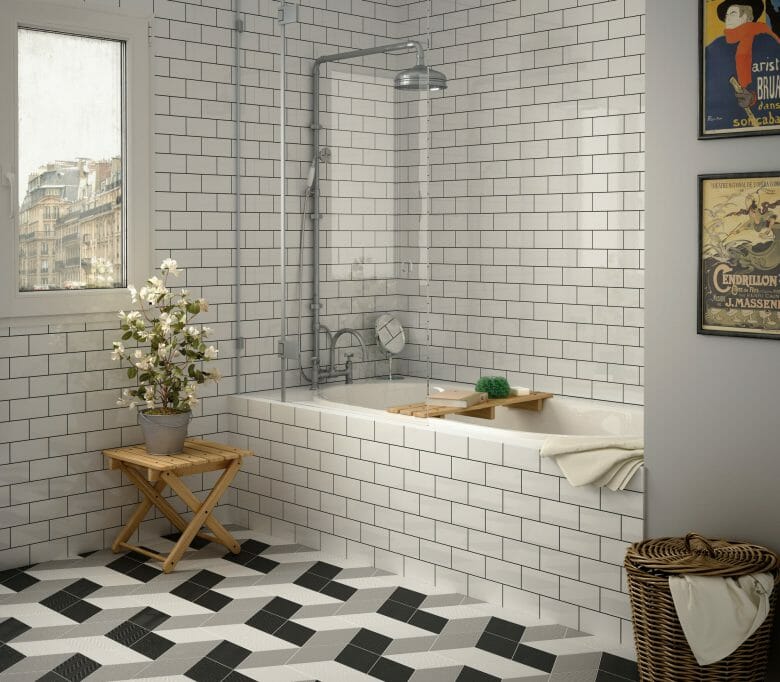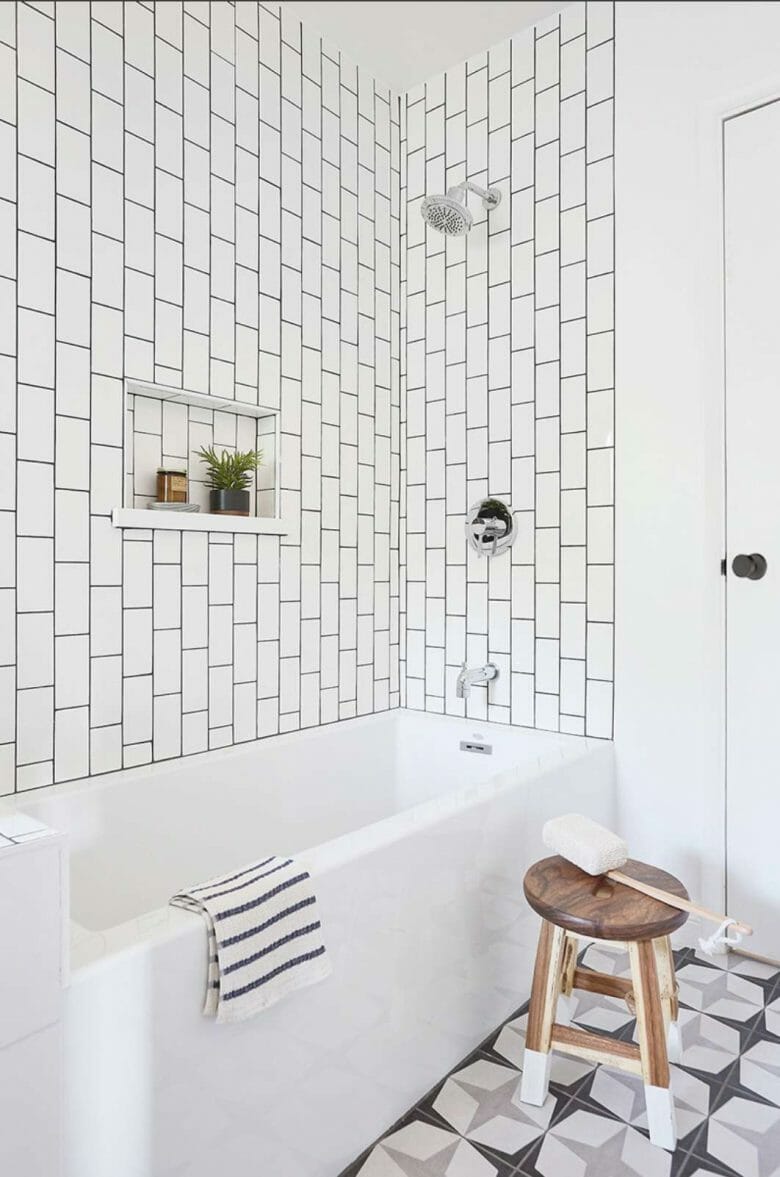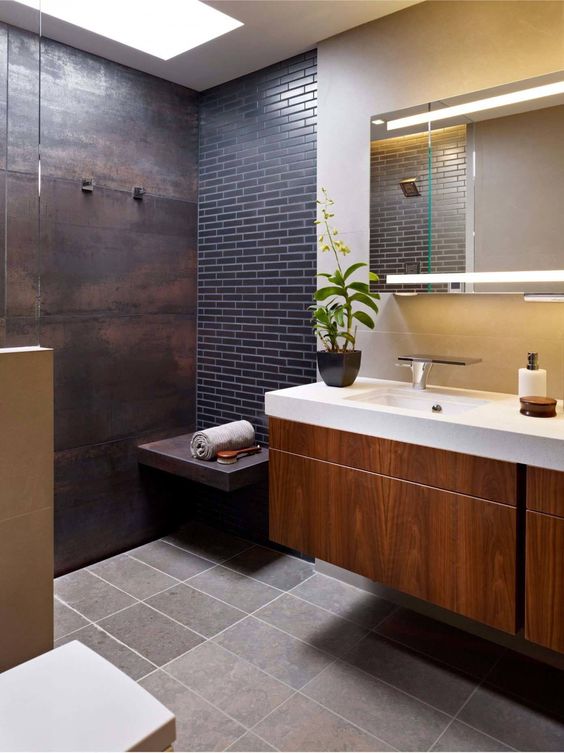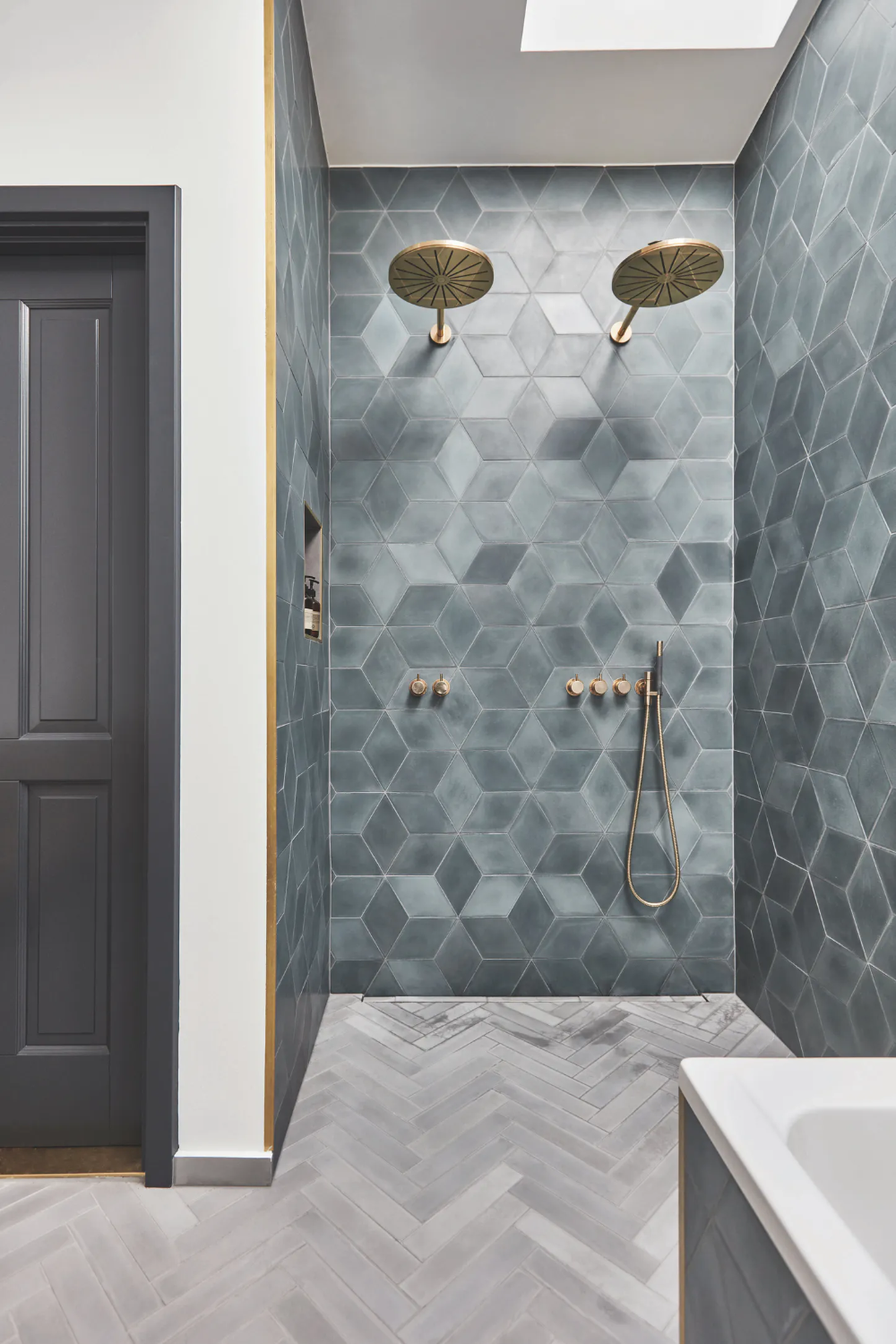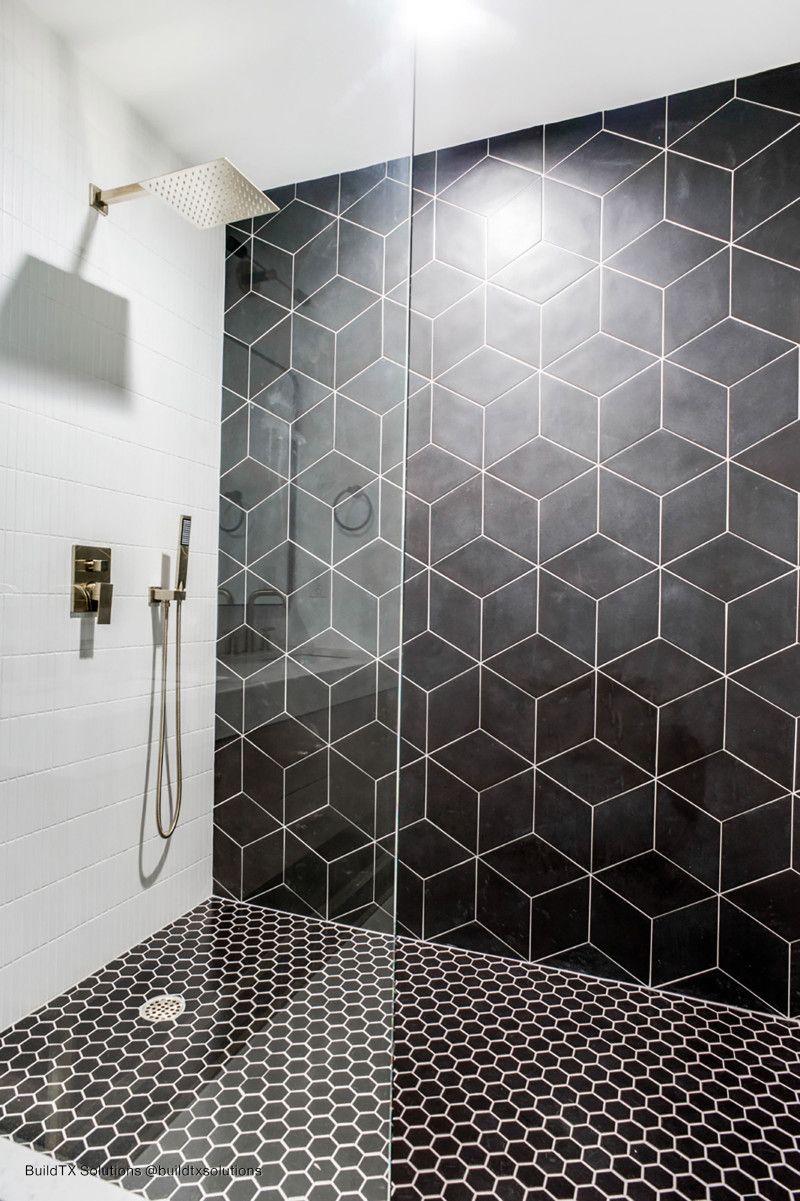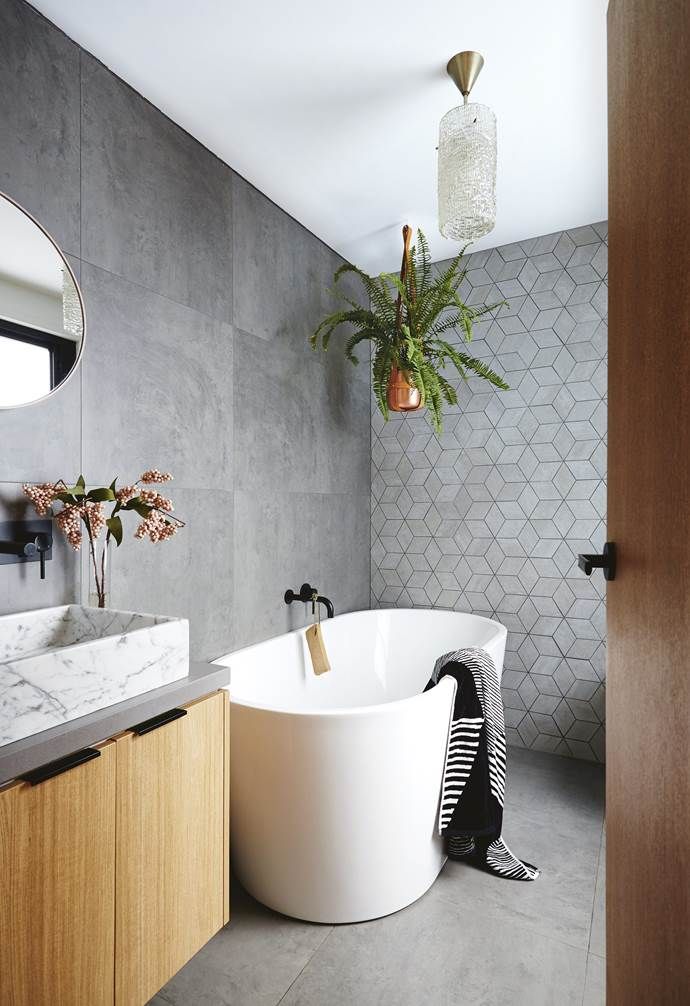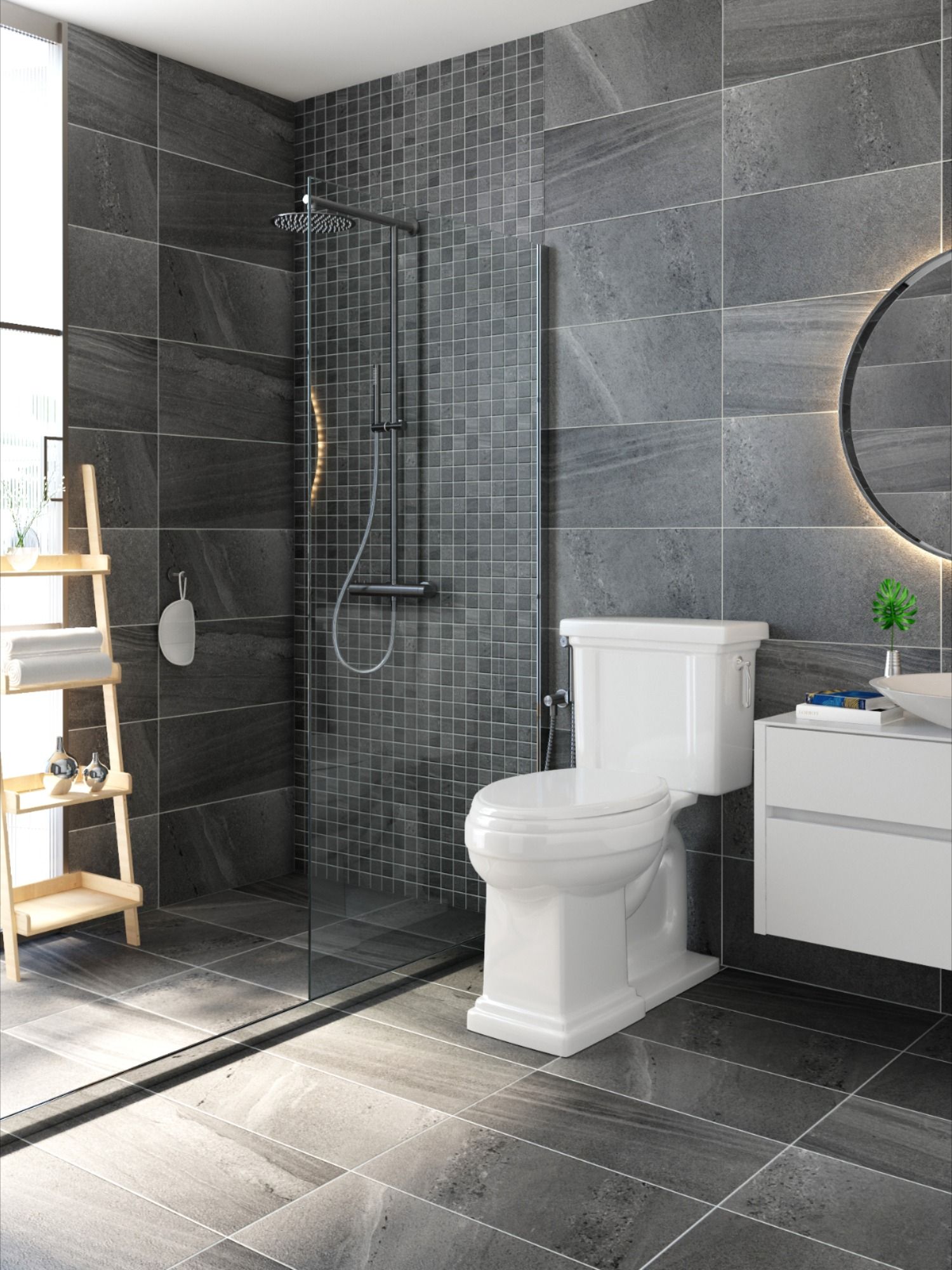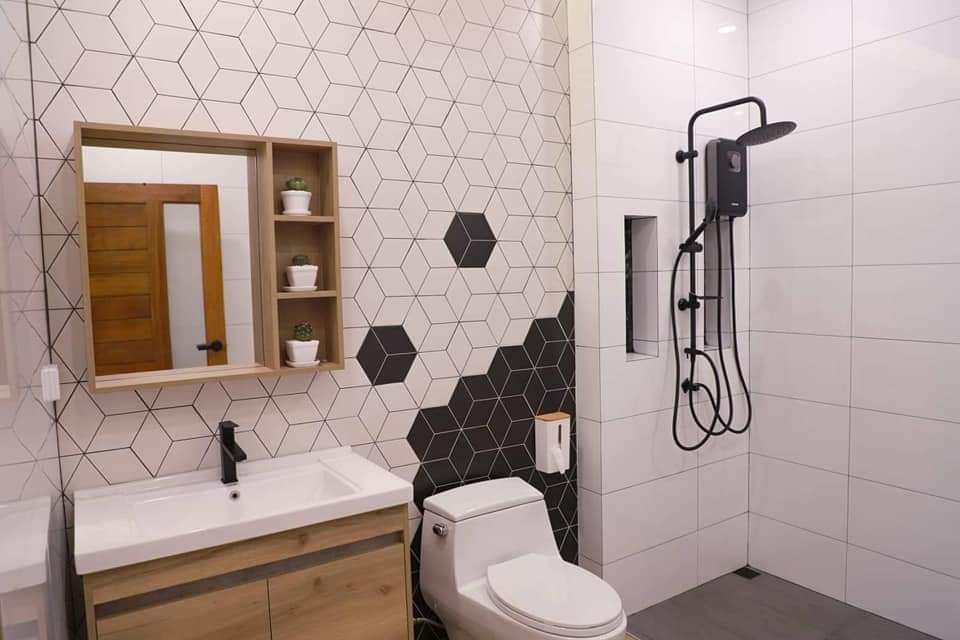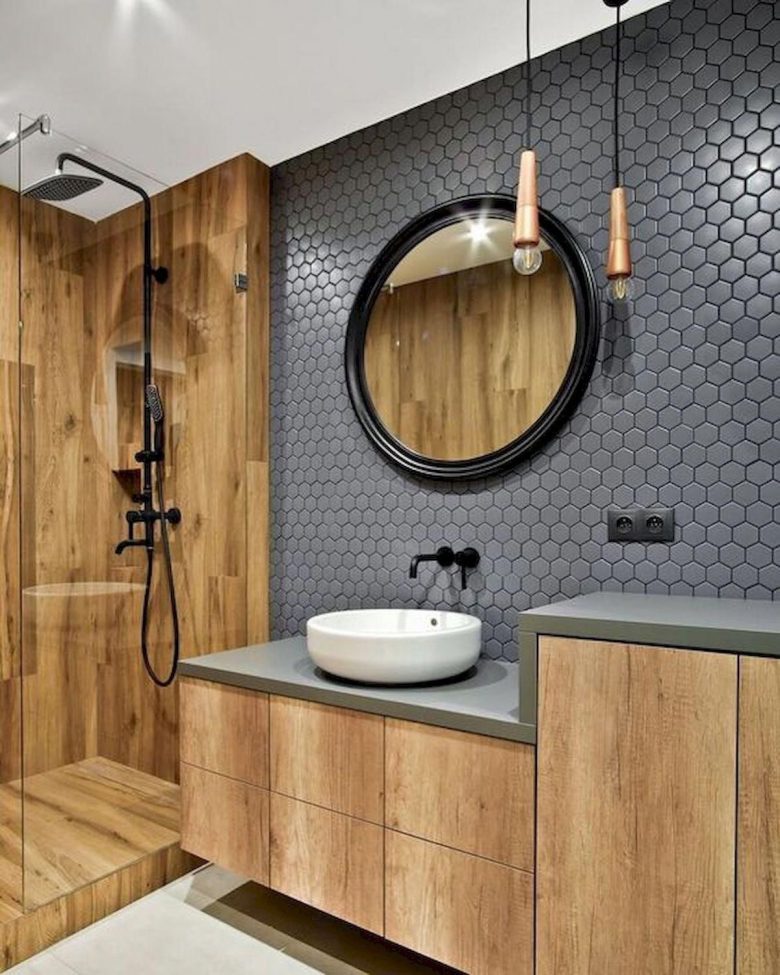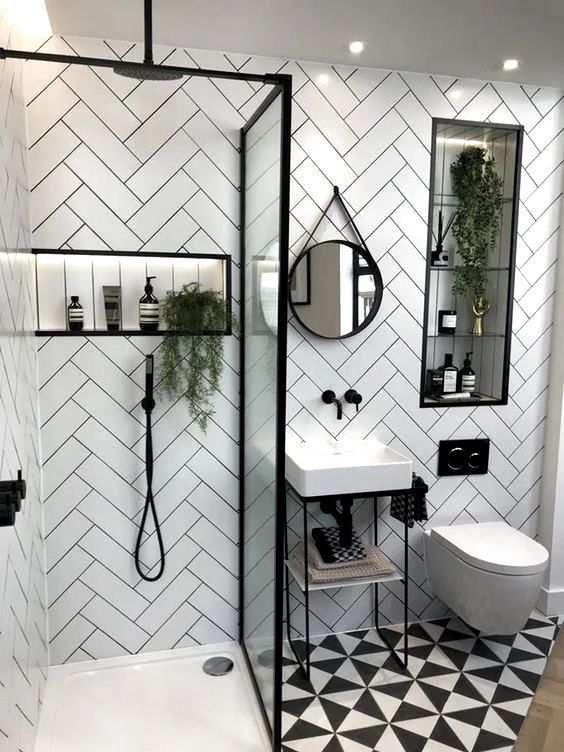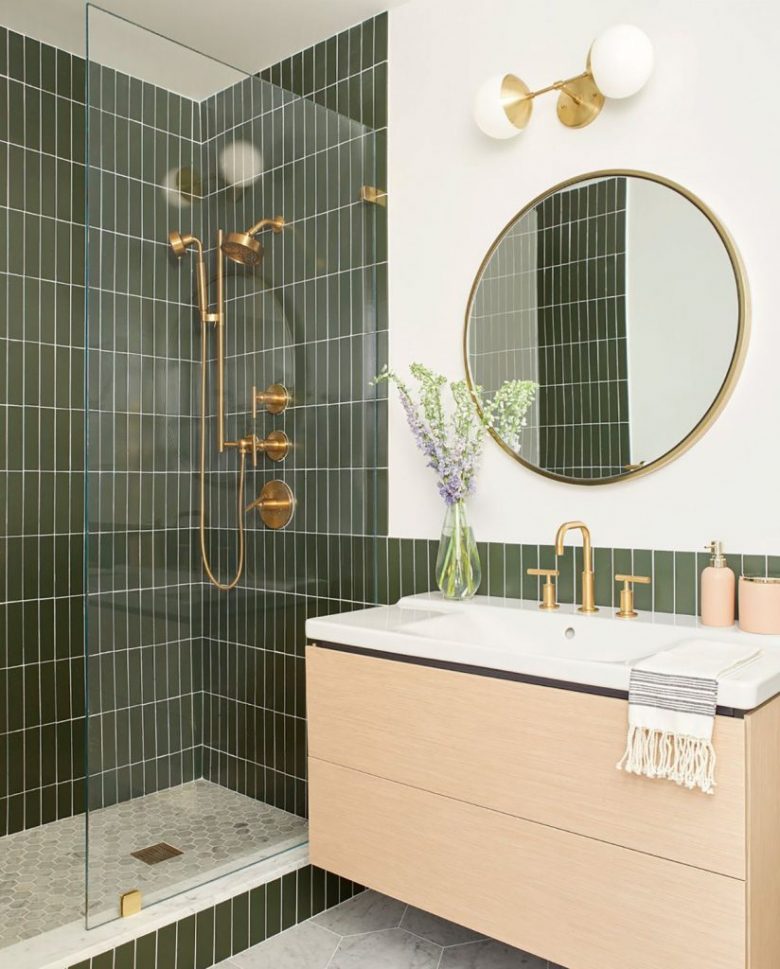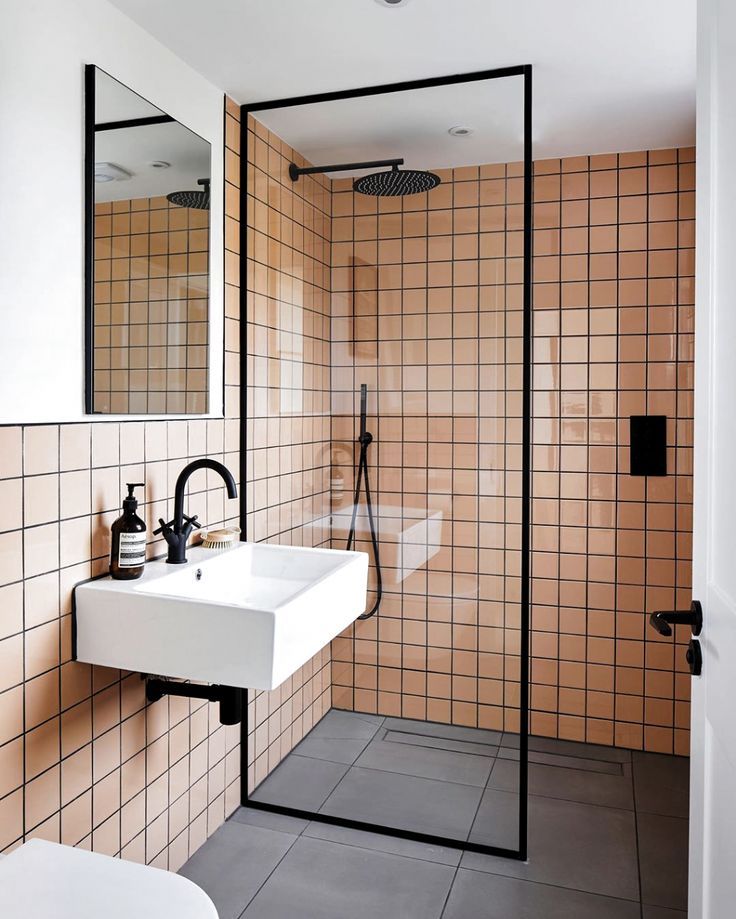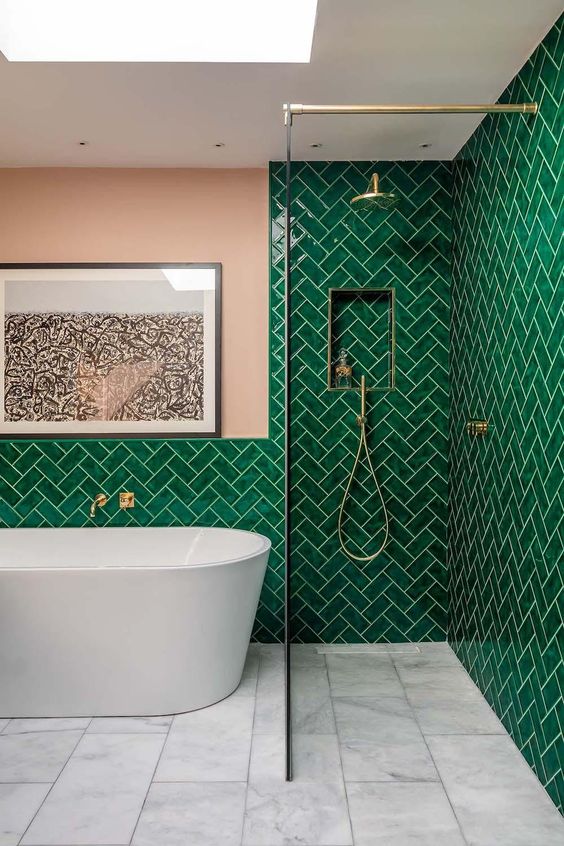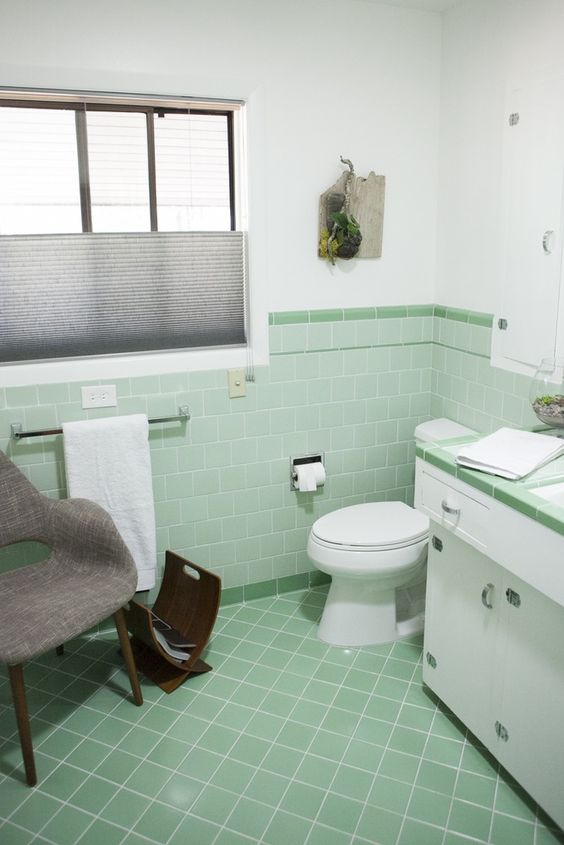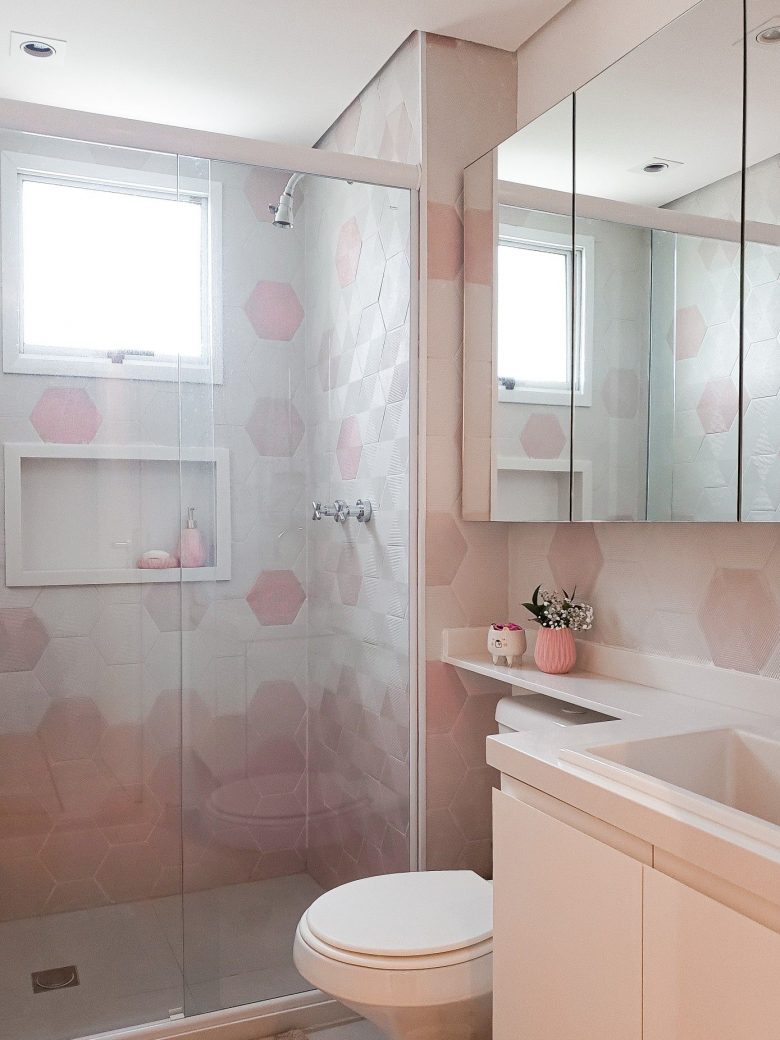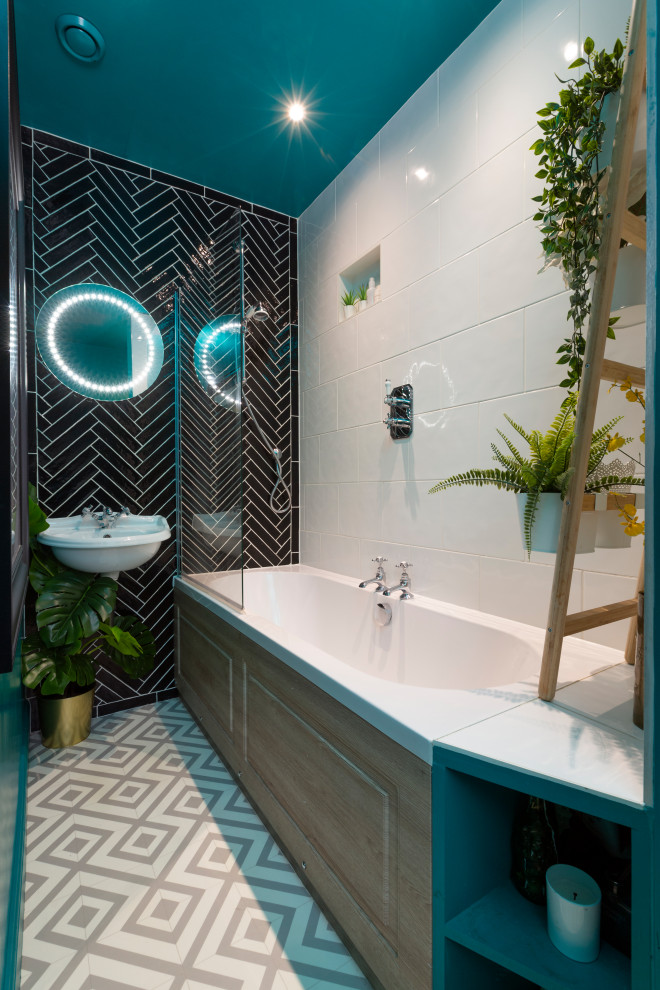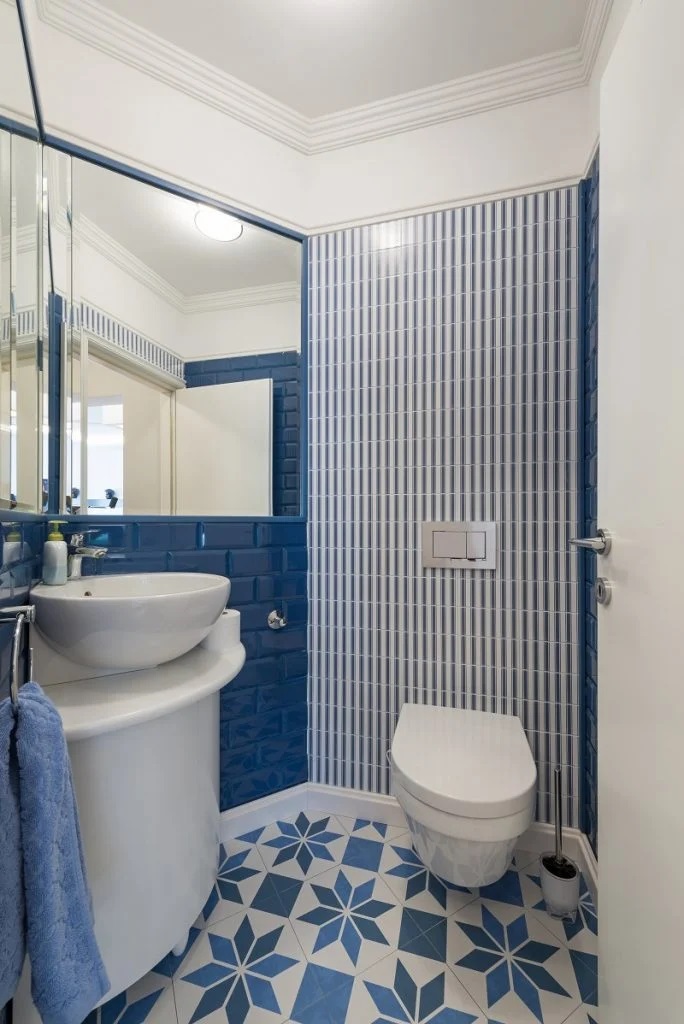
Tiles are a timeless and wise choice for bathrooms. They are excellent for flooring, countertops, and even walls in a hot, sudsy, bathroom environment.
The bathrooms of today not only have to put up with moisture everywhere, but also we now have harsh cleansers, modern shampoos, and soaps that can damage flooring, countertops, and walls.
Ceramic tiles are non-porous and can withstand this type of harsh environment beautifully. Stone tiles can also be used in wet environments, but should be sealed to keep harsh chemicals from pitting or damaging the surface.
If properly maintained, you won’t feel like you’re tempting fate stepping out of this bath tub onto a tile floor!
The water itself isn’t the problem. It’s the mold and mildew that comes with it that can make other types of materials harder to maintain than tiles in a bathroom.
Laminates, especially, can end up ruined when water soaks underneath them dislodging the glue and making them buckle and warp. This provides hidden areas where mold can grow, making for a very unhygienic space.
You especially don’t want to see mold and mildew in a white-toned bathroom as it is very easy to spot! However, if you use tiles, as in this design, it’s far easier to keep tiles looking crisp and clean.
Tiles will retain the heat more than other materials, when you combine it with radiant heating. Tiles, in general, conduct heat much better than laminate or wood flooring.
In addition, other types of materials will crack and become damaged over time due to expanding and contracting with the heat cycle. You don’t have that problem with ceramic and stone tiles, making them ideally suited for radiant heating.
When you choose tiles for your bathroom, you are making a durable and long-lasting choice. Tiles are a very hard material, thus, very long-lasting. If maintained properly, you can expect ceramic tile to last 75 years or more and stone tile to last over 100 years.
It’s true that tiles, whether ceramic or stone, cost more than other types of building materials. However, the benefits of durability and moisture-resistance make them last far longer, and in better shape.
Thus, while you pay more upfront, you actually pay less over time, since you are not replacing them as often as laminate, wood, or vinyl. Plus, they can even be like having a work of art in your home.
One of the many advantages of tile is how easy it is to keep clean. There is no need for harsh detergents, powders, or chemical cleaners. Tile does not require repetitive sealing either. An installation of tile will mean simple maintenance for the lifetime of the application.
.
.
.
.
.
.
.
.
.
.
.
.
.
.
.
.
.
.
.
.
.
.
.
.
.
.
.
.
.
.
Credit: Pinterest




